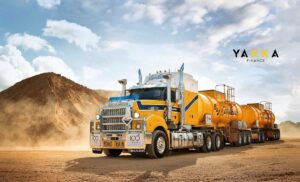
How Banks Assess Full Doc Truck and Equipment Finance Applications
Truck & Trailer Finance Australia
When applying for truck or trailer finance, lenders will sometimes require what’s called a Full Doc Assessment. This process involves providing complete financial documentation so the lender can perform a detailed analysis of your business and assess your ability to repay the loan.
It’s a more comprehensive review compared to a Low Doc application, but it can also unlock larger loan amounts, better interest rates, and access to premium lenders.
What Is a Full Doc Assessment?
A Full Doc Assessment is when a lender requests full financials — including business tax returns, profit and loss statements, and supporting documents — to calculate serviceability and verify income.
It gives the lender a complete understanding of your business’s financial health, ensuring that the loan is sustainable and aligns with policy.
When Do You Need to Apply for Full Doc Truck Finance?
While Low Doc loans are common in asset finance, certain scenarios automatically trigger the need for a Full Doc assessment. These include:
1. High Loan Amounts
- Low Doc facilities usually cap out between $150,000 and $500,000 (depending on the lender).
- Anything above those limits typically requires full financials.
2. Complex or High-Risk Assets
- Specialised assets such as prime movers, cranes, or construction equipment often need Full Doc approval.
- Lenders prefer detailed financial information for harder-to-value or industry-specific assets.
3. Poor or Limited Credit History
- Defaults, judgments, or lower credit scores can trigger the need for additional documentation.
- The lender wants to see consistent cash flow and repayment history.
4. Insufficient Low Doc Support
- If your Low Doc application lacks key documentation (like BAS statements or bank trading summaries), a lender may request full financials.
5. Newer ABNs
- Most Low Doc programs require an ABN registered for at least 24 months.
- If your business is newer, lenders will generally ask for full financials to confirm income stability.
6. High LVR or Out-of-Policy Risk
- If the Loan-to-Value Ratio (LVR) is high or the deal doesn’t fit within standard guidelines, the lender may shift the assessment to Full Doc.
What Documents Are Required?
When applying for Full Doc truck or trailer finance, lenders may request:
- Last 2 years of business financial statements (P&L and Balance Sheet)
- Current year interim financials
- Last 2 years of directors’ tax returns
- Current tax portals (Integrated Client Account and Income Tax Account)
- Lodged BAS statements
- Commitment schedule
- Cash flow forecasts or projections
- Current aged debtor and creditor listings
These documents help lenders verify serviceability and ensure that your business can comfortably manage repayments.
Mini Case Study
A transport company based in Melbourne was looking to finance $850,000 worth of new trailers and support vehicles. Their initial application under a Low Doc facility was declined due to the total loan size and asset type.
By submitting a Full Doc application with complete financials, we were able to present the business’s strong profit history and consistent cash flow. The lender approved the full amount at a competitive rate — saving the company over 1% in annual interest and giving them the flexibility to expand their fleet on schedule.
Key Takeaway
Full Doc truck and trailer finance applications may take more time to prepare but can open access to better terms, larger loan amounts, and more trusted lenders.
If your loan size is significant or your business is newer or more complex, providing full financials upfront often leads to smoother approvals and stronger outcomes.
FAQs
Written By




